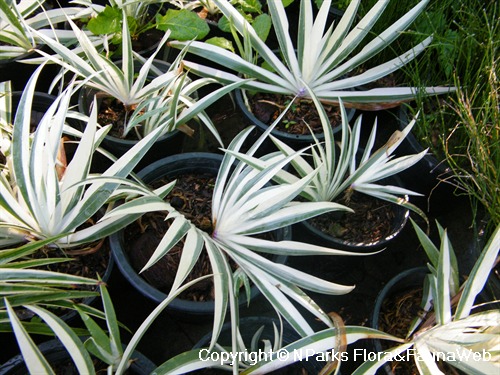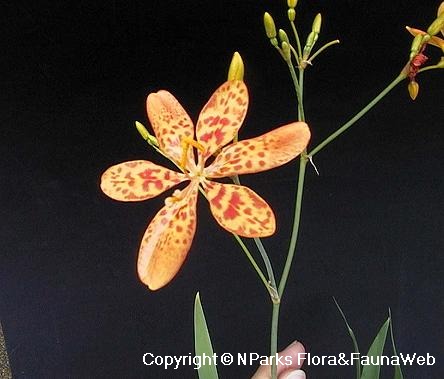
Back
Iris domestica (L.) Goldblatt & Mabb.
| Family Name: | Iridaceae |
| Synonyms: | Belamcanda chinensis (L.) Redouté, Belamcanda chinensis var. curtata Makino, Belamcanda chinensis var. taiwanensis S.S.Ying, Belamcanda pampaninii H.Lév., Ixia chinensis L. nom. cons., Pardanthus chinensis (L.) Ker Gawl., Epidendrum domesticum L., Vanilla domestica (L.) Druce |
| Common Name: | Leopard Flower, Blackberry Lily, Salmon Blood Lily, Pokok Kipis, 射干 |
Name
Classifications and Characteristics
| Plant Division | Angiosperms (Flowering Seed Plants) (Monocotyledon) |
|---|---|
| Plant Growth Form | Herbaceous Plant |
| Lifespan (in Singapore) | Perennial |
| Mode of Nutrition | Autotrophic |
| Plant Shape | Shrubby |
| Maximum Height | 0.6 m to 1 m |
Biogeography
| Native Distribution | India, Bangladesh, Himalayas, Tibet, China, Mongolia, Hainan, Taiwan, Korea, Japan, Myanmar, Vietnam, Cambodia & Philippines |
|---|---|
| Native Habitat | Terrestrial (Grassland / Savannah/ Scrubland) |
| Preferred Climate Zone | Sub-Tropical / Monsoonal, Temperate |
| Local Conservation Status | Non-native (Horticultural / Cultivated Only) |
Description and Ethnobotany
| Growth Form | Herbaceous, 0.6-1.0m height. |
|---|---|
| Foliage | Leaves grassy, strap-like, arranged in flattened fans on short upright stems. |
| Stems | Rhizomes pale brown. |
| Flowers | Flowers orange-yellow dotted with red, roll up tightly after being pollinated. |
| Fruit | Fruits dry pods, mature from green to brown, split to reveal clusters of seeds. Seeds black, toxic when ingested. |
| Habitat | It can be found in grasslands, pastures, woodland clearings, disturbed limestone glades, rocky outcrops, roadsides, meadows and mountainous regions or shrublands. |
| Cultivation | Ideal as free-flowering and showy groundcover in flower borders with moist, well-drained soils. Able to bloom in partial shade. Propagate by division of rootball or seeds. |
| Ethnobotanical Uses | Edible Plant Parts : Edible Leaves Food (Herb or Spice) Others: Flowers and mature seed pods used in flower arrangements. Long history of use in traditional Chinese medicine. Rhizomes believed to be cooling, antibacterial, antifungal, anti-inflammatory. Used as tonic for lung and liver problems, coughs, tonsillitis, improving appetite. Also has abortive effect, and may cause miscarriage in first trimester. |
Landscaping Features
| Desirable Plant Features | Ornamental Flowers, Ornamental Foliage, Ornamental Fruits |
|---|---|
| Landscape Uses | Container Planting, General, Flowerbed / Border, Swimming Poolside |
| Thematic Landscaping | Golden Garden, Butterfly Garden, Naturalistic Garden |
| Usage Hazard - Cons | Toxic Upon Ingestion |
| Usage Hazard - Cons Remarks | Seeds slightly toxic when eaten. Rhizomes can cause abortion and miscarriage in pregnant women. |
Fauna, Pollination and Dispersal
| Fauna Pollination Dispersal Associated Fauna | Butterfly-Attracting |
|---|---|
| Pollination Method(s) | Biotic (Fauna) (Insects (Butterfly, Moth)) |
| Seed or Spore Dispersal | Abiotic (Explosive Dehiscence) |
Plant Care and Propagation
| Light Preference | Semi-Shade, Full Sun |
|---|---|
| Water Preference | Moderate Water |
| Plant Growth Rate | Fast |
| Rootzone Tolerance | Fertile Loamy Soils, Well-Drained Soils, Easy to Grow |
| Maintenance Requirements | Low |
| Diseases | May suffer crown rot in waterlogged soils. |
| Propagation Method | Seed, Division |
| Planting Distance | 0 |
Foliar
| Foliage Retention | Evergreen |
|---|---|
| Mature Foliage Colour(s) | Green |
| Mature Foliage Texture(s) | Smooth |
| Foliar Type | Simple / Unifoliate |
| Foliar Arrangement Along Stem | Alternate |
| Foliar Shape(s) | Non-Palm Foliage (Linear) |
| Foliar Venation | Parallel |
| Foliar Margin | Entire |
| Foliar Apex - Tip | Acuminate |
| Typical Foliar Area | Mesophyll ( 45cm2 - 182.25 cm2 ) |
| Leaf Area Index (LAI) for Green Plot Ratio | 3.5 (Shrub & Groundcover - Monocot) |
Non - Foliar and Storage
| Stem Type & Modification | Herbaceous |
|---|---|
| Root Type | Underground (Fibrous Root) |
| Specialised Storage Organ(s) | Underground (Rhizome) |
Floral (Angiosperm)
| Flower & Plant Sexuality | Bisexual Flowers |
| Flower Colour(s) | Orange, Red, Yellow / Golden |
|---|---|
| Flowering Period | Free-Flowering |
| Flowering Opening Time | Time-Independent |
| Flower Lifespan on Plant | 1 Day |
| Flowering Habit | Polycarpic |
Fruit, Seed and Spore
| Mature Fruit Colour(s) | Black |
|---|---|
| Fruit Classification | Simple Fruit |
| Fruit Type | Dehiscent Dry Fruit , Capsule |
Image Repository
Others
| Master ID | 429 |
|---|---|
| Species ID | 1725 |
| Flora Disclaimer | The information in this website has been compiled from reliable sources, such as reference works on medicinal plants. It is not a substitute for medical advice or treatment and NParks does not purport to provide any medical advice. Readers should always consult his/her physician before using or consuming a plant for medicinal purposes. |

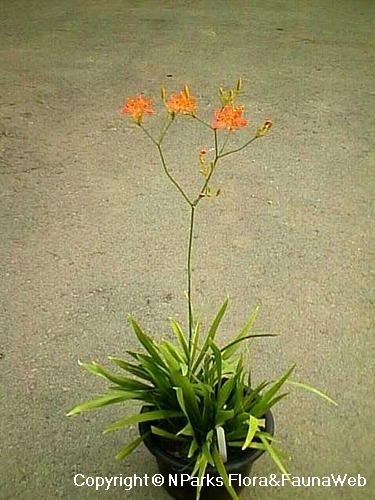
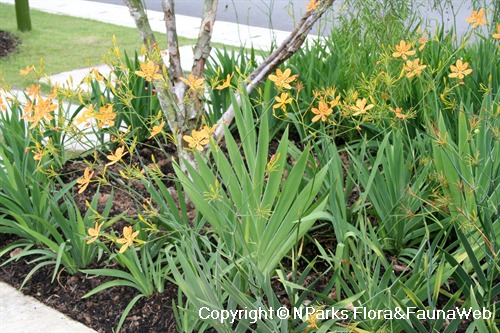
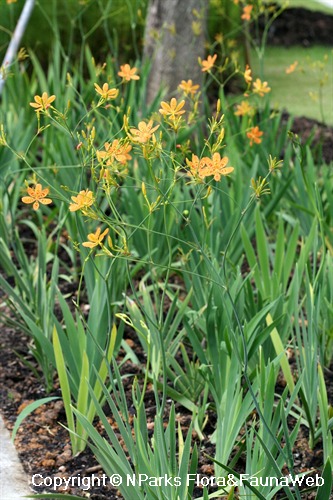
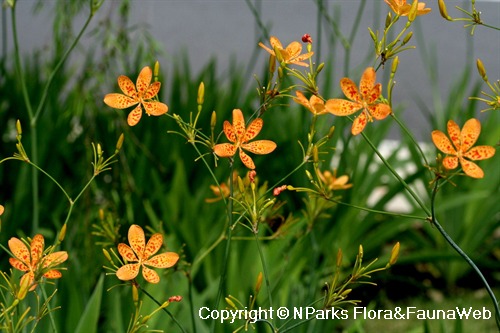
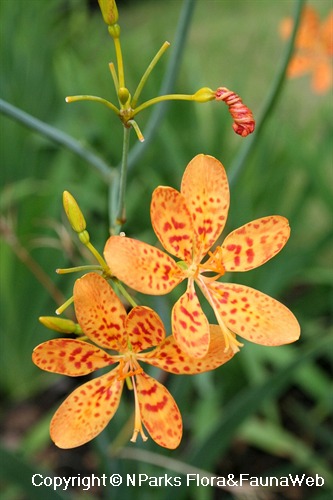
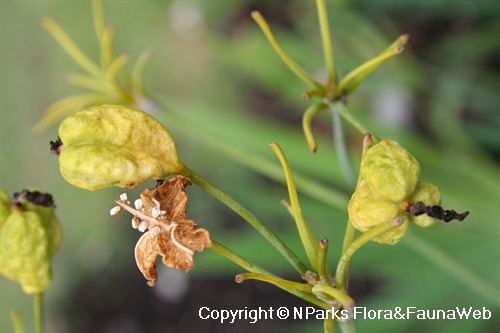
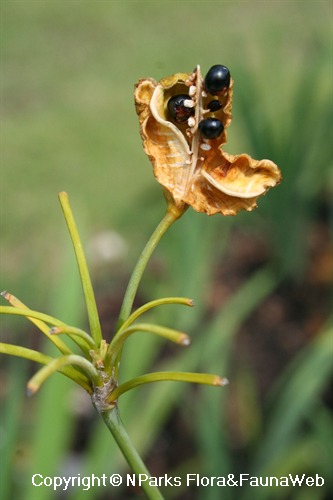
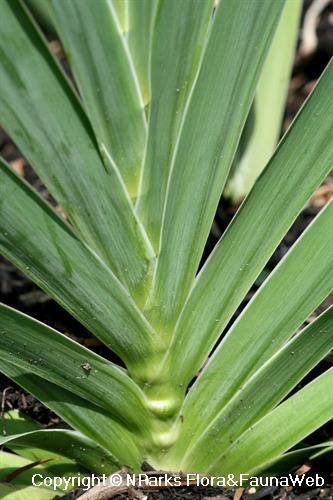
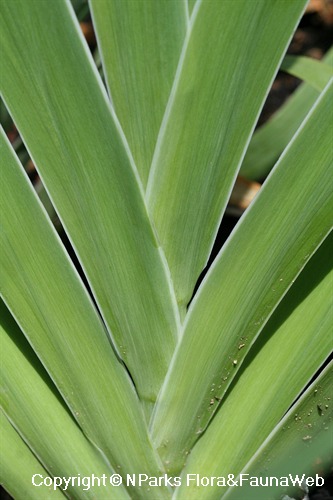
.jpg)
